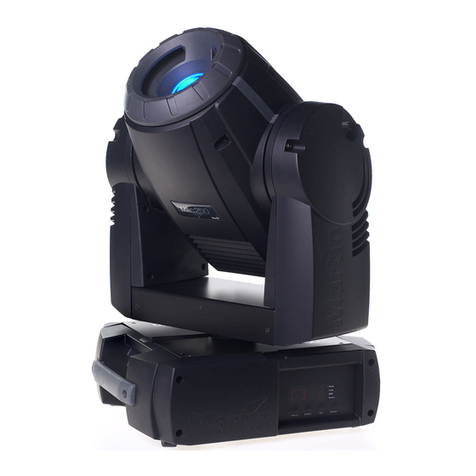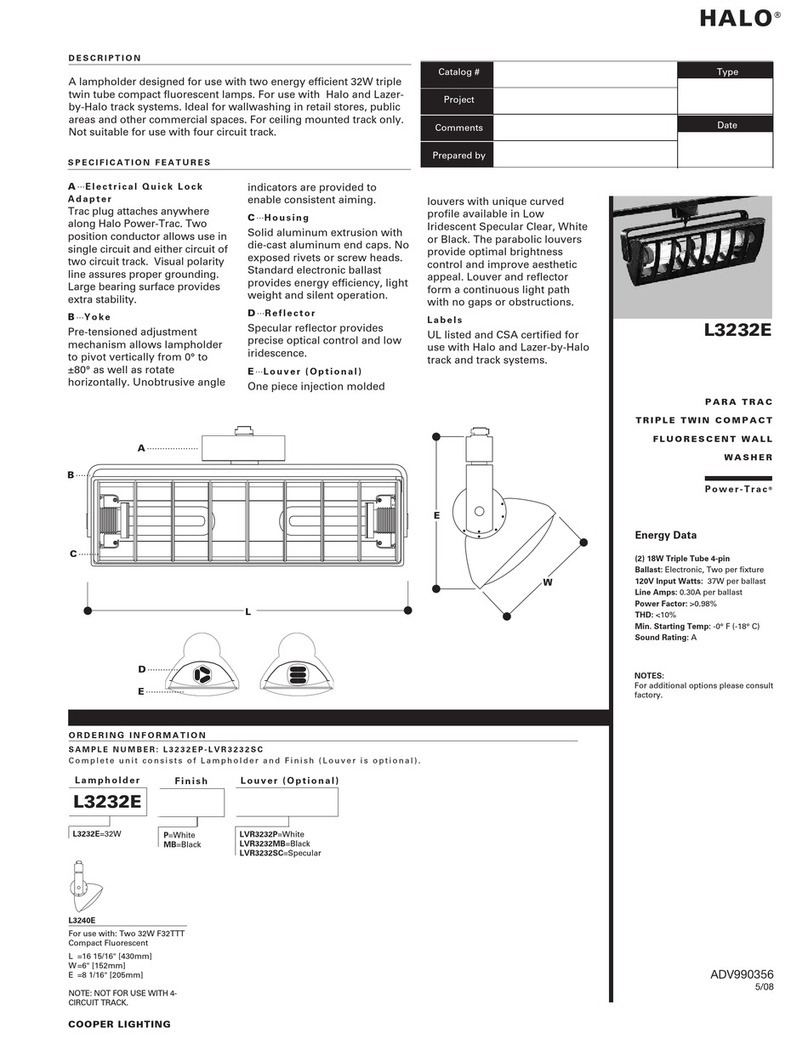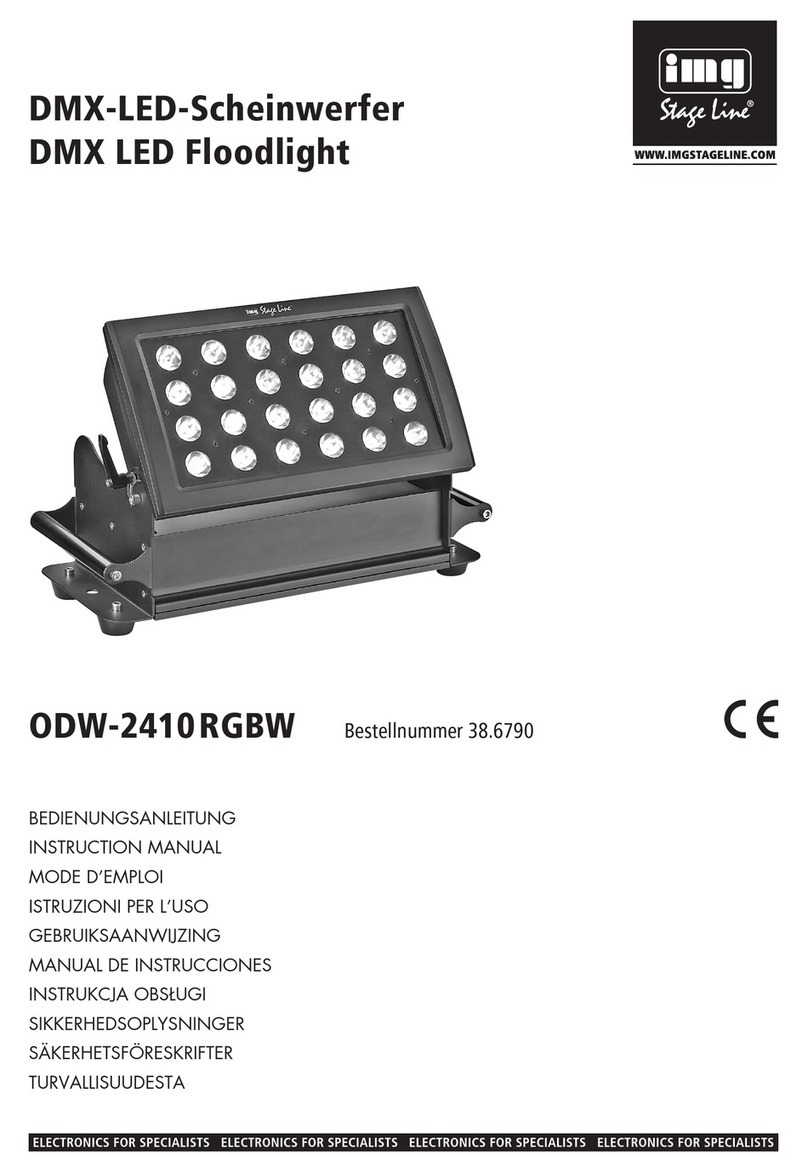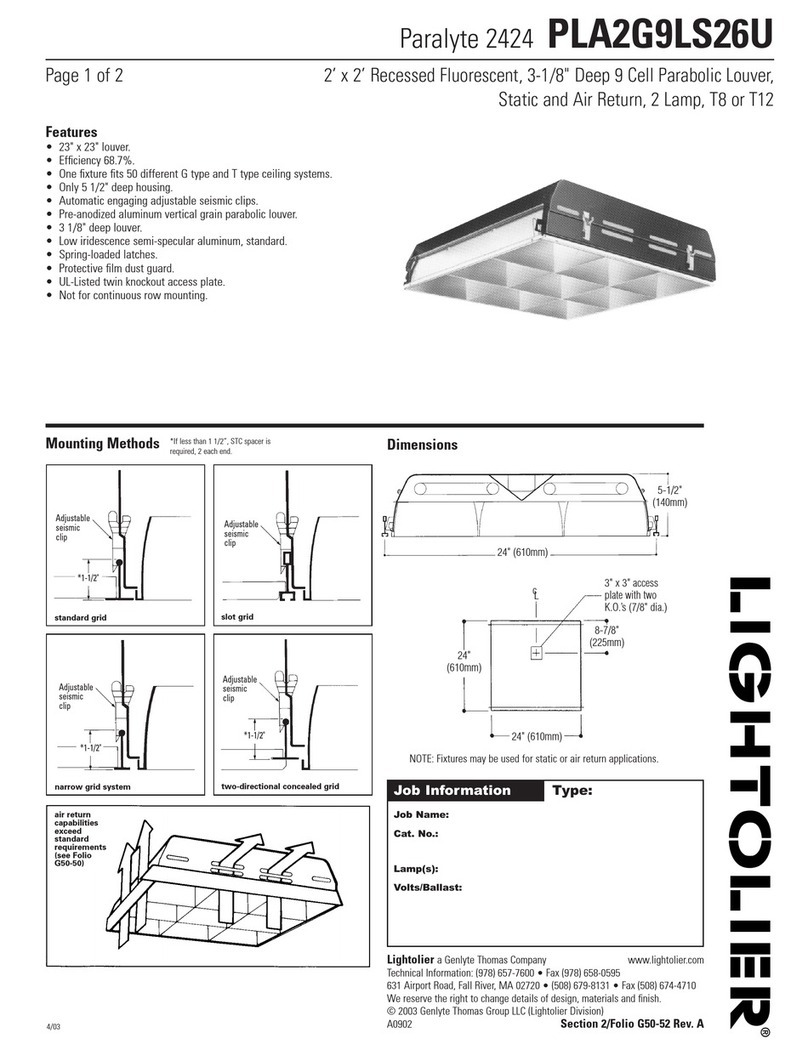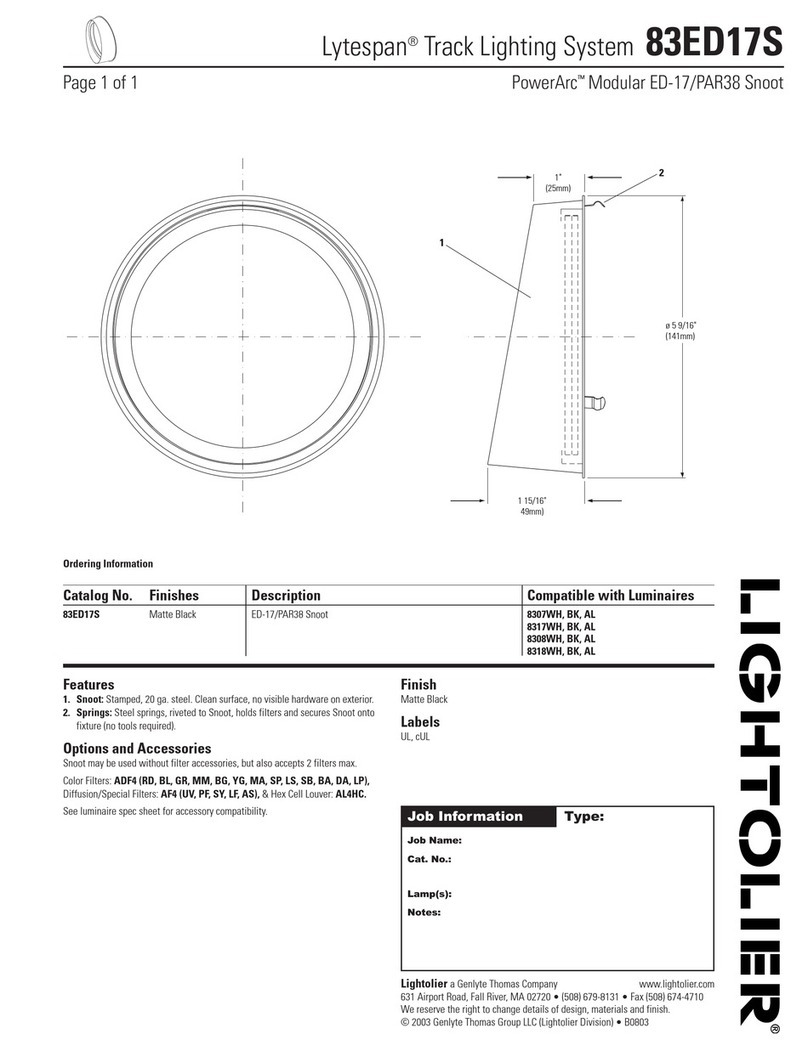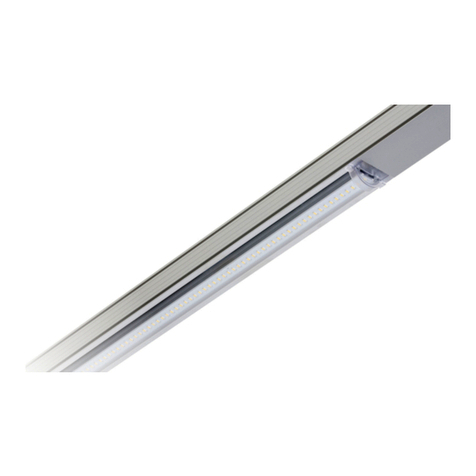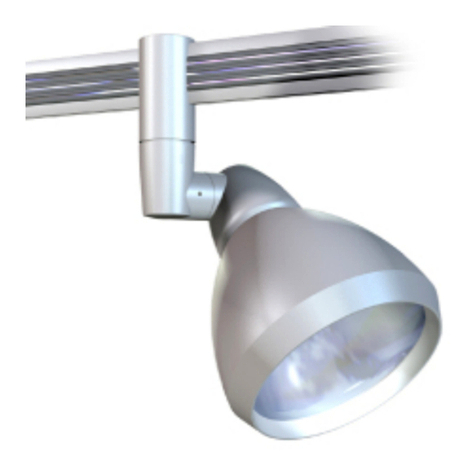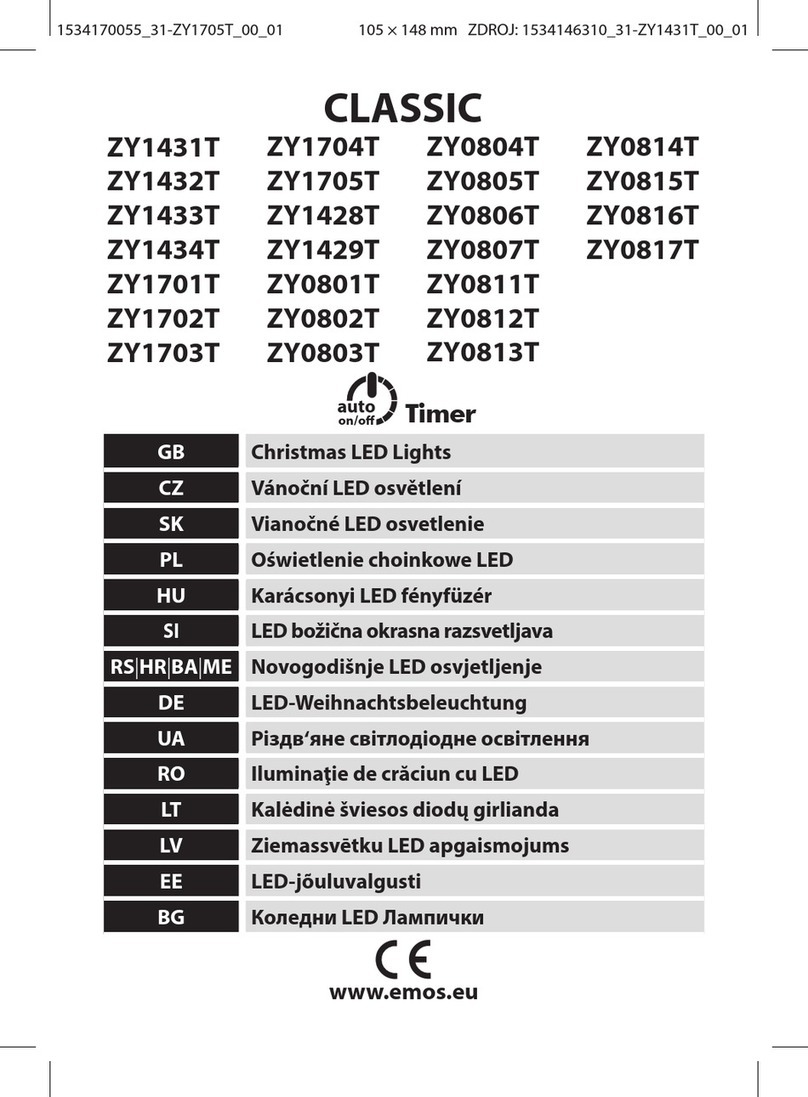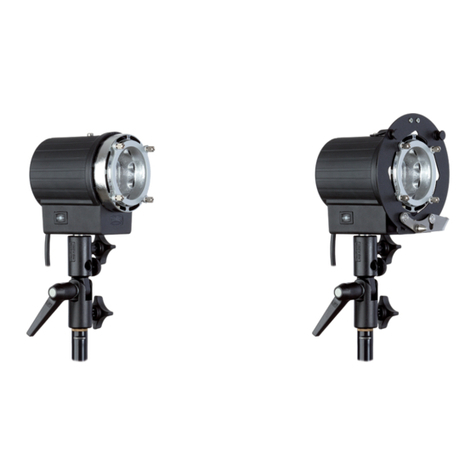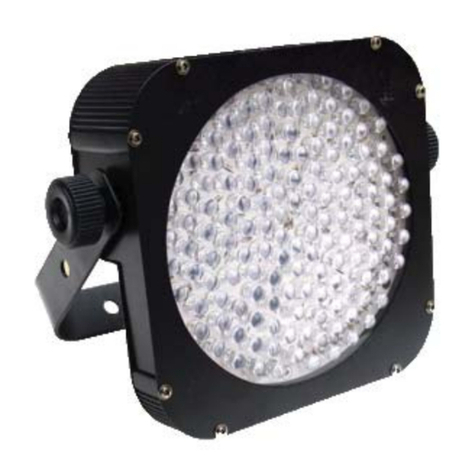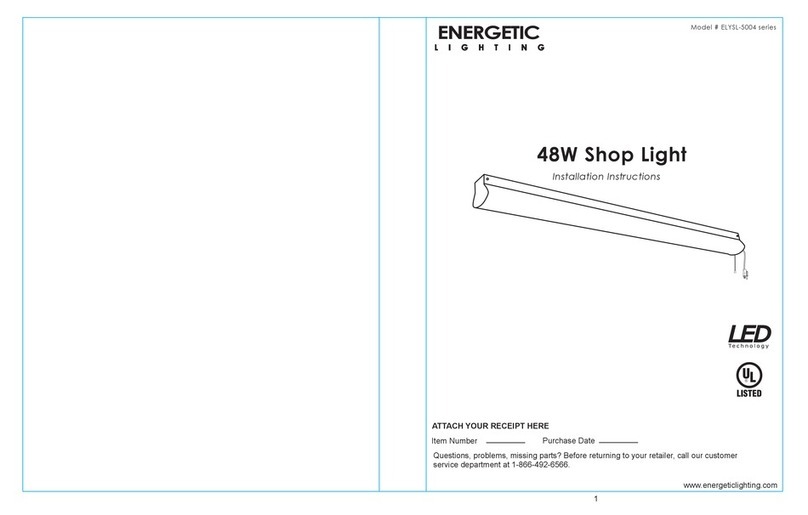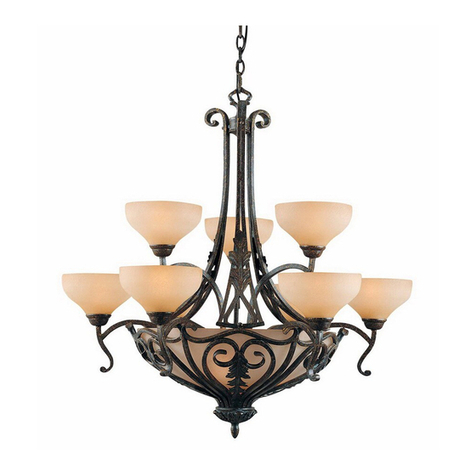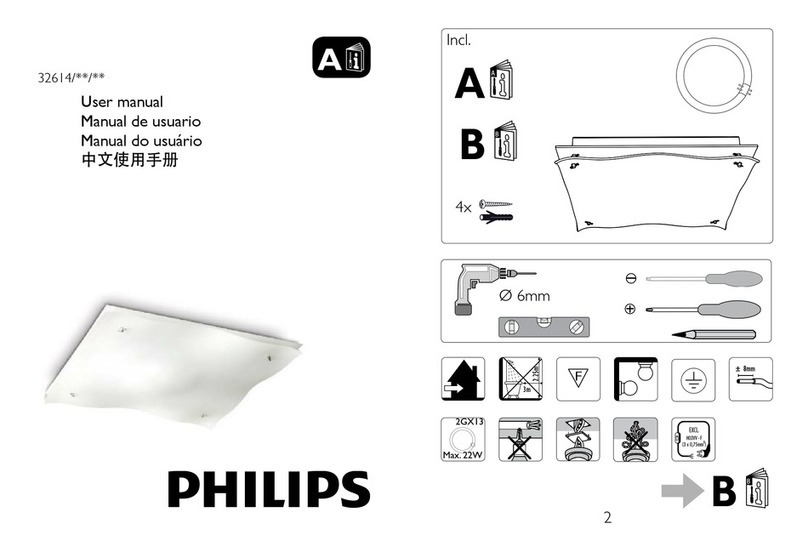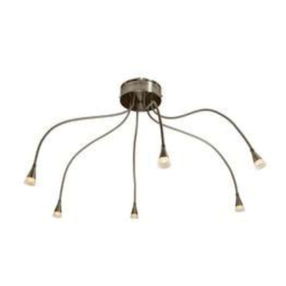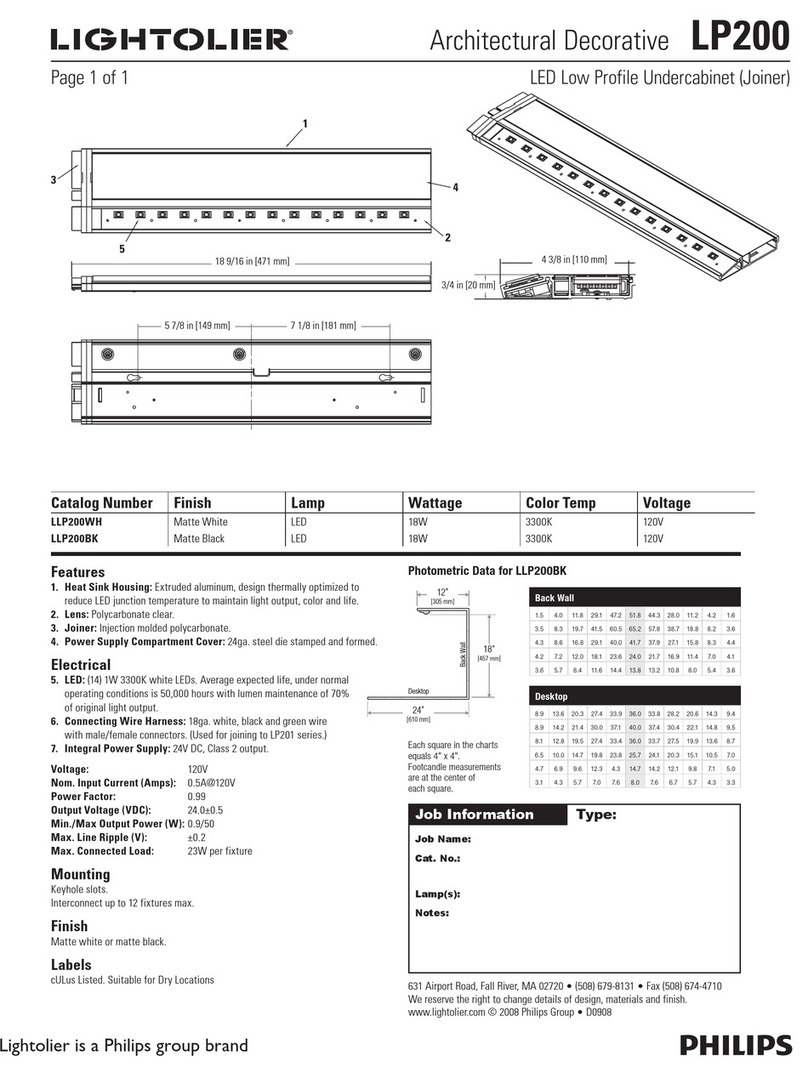
FR
ES
• xer la base clignotante à la colonne en utilisant les 3 chevilles et les 3 vis (Fig. 3).
• passer le cablês dans le trou.
• brancher les ls du câble d'alimentation à la plaque de connexion (Fig. 5).
• insérer le clignotant sur la base en le faisant coulisser verticalement/horizontalement
(Fig. 7) en vériant qu’il se xe à l’arrière (Fig. 8).
• xer le clignotant avec les 2 vis latérales Ø 2,9 x 6,5 mm (Fig.3).
INSTALLATION HORIZONTALE
• extraire complètement la base du clignotant (Fig. 1a).
• pratiquer 2 trous supplémentaires avec une pointe de Ø 4,5 (Fig. 4) sur l'arrière du clignotant.
• xer l'arrière du clignotant à la colonne avec 3 chevilles et 3 vis (Fig. 4).
• passer le cablês dans le trou.
• brancher les ls du câble d'alimentation à la plaque de connexion (Fig. 5).
• insérer le clignotant sur la base en le faisant coulisser verticalement/horizontalement
(Fig. 7) en vériant qu'il se xe à l'arrière (Fig. 8).
• xer le clignotant avec les 2 vis latérales Ø 2,9 x 6,5 mm (Fig. 4).
Attention - ne pas installer le produit dans une position autre que celle indiquée sur la
Fig.6 et respecter les indications de la Fig.5 pour réaliser les branchements
électriques.
5 - REMPLACEMENT DES DEL
Pour remplacer les DEL, procéder comme suit :
• couper l'alimentation électrique du clignotant
• avec à tournevis, dévisser les 2 vis latérales Ø 2,9 x 6,5 (Fig. 3/4)
• extraire le corps du clignotant depuis la base en faisant attention à pas forcer
• enlever partiellement la bande led sans forcer les connecteurs et débrancher le connecteu
(Fig.5) de la bande, et enlever la même complètement
• Insérer partiellement la nouvelle bande led, raccorder le connecteur (aFig.5) et insérer la même complètement
• repositionner le clignotement dans la base
• serrer les 2 vis latérales Ø 2,9 x 6,5 (Fig. 3/4)
• reconnecter l'alimentation électrique
6 - ESSAI ET MISE EN SERVICE
L'essai du système doit être effectué par un technicien qualifié. Celui-ci procèdera aux essais requis par la
norme relative en fonction des risques présents, et vérifiera l'adéquation aux prescriptions normatives, en parti-
culier celles de la norme EN12445 indiquant les méthodes d'essai pour les automatismes relatifs aux portes et
portails. Si tous les dispositifs (et pas seulement certains d'entre eux) passent les tests avec succès, le système
pourra être mis en service, conformément aux indications fournies dans les instructions du produit principal.
7 - ÉLIMINATION
En n de vie de l'automation, s'assurer que le démantèlement soit effectué par un personnel
qualié et que les équipements soient recyclés ou éliminés conformément aux normes loca-
les en vigueur. Il est interdit de jeter ce produit parmi les ordures ménagères.
Attention : certaines parties du produit peuvent contenir des substances polluantes
ou dangereuses qui, si elles sont dispersées, peuvent entraîner des effets néfastes
sur l'environnement et la santé humaine.
1 - AVERTISSEMENTS POUR LA SÉCURITÉ
ATTENTION - pour la sécurité des personnes, il est important de respecter
ces instructions et de les conserver pour une utilisation future.
Lire attentivement les instructions avant de procéder à l’installation. La conception et la fa-
brication des dispositifs composant le produit ainsi que les informations contenues dans le
présent manuel sont conformes aux normes de sécurité en vigueur. Cependant, une instal-
lation et une programmation erronées peuvent impliquer de graves blessures sur les person-
nes exécutant les travaux et sur les futurs utilisateurs. C'est pourquoi, durant l'installation, il
est important de suivre attentivement toutes les instructions fournies dans ce manuel.
2 - INTRODUCTION AU PRODUIT
VOYANT CLIGNOTANT DE SIGNALEMENT
Le clignotant Eclipse est un dispositif de signalisation applicable à l'automatisation de portes
et portails, portes de garage et barrières routières.
Attention - toute utilisation autre que celle décrite, dans des conditions environne-
mentales autres que celles indiquées dans ce manuel, doit être considérée comme
impropre et interdite.
Attention - la société Key Automation S.p.A. se réserve le droit de modier à tout
moment et sans préavis les données et les informations indiquées dans ce manuel.
CARACTÉRISTIQUES TECHNIQUES
3 - CONTRÔLES PRÉLIMINAIRES
ATTENTION - avant d'installer le produit, vérier les points suivants :
• vérier que la surface sur laquelle le dispositif sera xé soit solide et ne permette pas les vibrations.
• utiliser des branchements électriques adaptés aux exigences actuelles.
• vérier que l'alimentation soit conforme aux valeurs des caractéristiques techniques.
4 - INSTALLATION DU PRODUIT
INSTALLATION VERTICALE
• extraire complètement la base du clignotant (Fig. 1a).
• xer l'arrière du clignotant à la base avec les 2 vis Ø 3,9 x 9,5 mm (Fig. 1b).
• pratiquer 2 trous supplémentaires avec une pointe de Ø 3 et fixer l’arrière du clignotant
à la base avec 2 vis supplémentaires de Ø 3,9 x 9,5 mm (Fig. 2).
modèle Eclipse
alimentation 24 Vac/Vdc 3 W (max)
éclairage de courtoisie 24 Vac/Vdc
clignotant 24 Vac/Vdc
fréquence antenne 433,92 MHz
cycle maximum de fonctionnement (clignotant) 50%
cycle maximum de fonctionnement (éclairage de courtoisie) 100%
degré de protection IP 44
température de fonctionnement -20° +50°C
couleur (clignotant) Ambre
couleur (éclairage de courtoisie) Blanc
dimensions (L - P - H mm) 75 - 98 - 190
• je a la columna la base con la luz intermitente mediante los 3 tacos y los 3 tornillos (Fig. 3).
• pasar los cables por el pasa-cable.
• conecte los hilos del cable de alimentación a la bornera (Fig. 5).
• introduzca la luz intermitente en la base deslizándolo verticalmente/horizontalmente (Fig. 7)
asegurándose de que la luz intermitente se enganche en la parte trasera (Fig. 8).
• je la luz intermitente con los 2 tornillos laterales Ø 2,9 x 6,5 mm (Fig.3).
INSTALACIÓN HORIZONTAL
• Desensarte completamente la base trasera de la luz intermitente (Fig. 1a).
• realice en la parte trasera de la luz intermitente 2 agujeros extra con una punta Ø 4,5 (Fig. 4).
• je la parte trasera de la luz intermitente a la columna con 3 tacos y 3 tornillos (Fig. 4).
• pasar los cables por el pasa-cable.
• conecte los hilos del cable de alimentación a la bornera (Fig. 5).
• introduzca la luz intermitente en la base deslizándolo verticalmente/horizontalmente (Fig. 7)
asegurándose de que la luz intermitente se enganche en la parte trasera (Fig. 8).
• je la luz intermitente con los 2 tornillos laterales Ø 2,9 x 6,5 mm (Fig. 4).
Atención - no monte el producto en posiciones diferentes de las especicadas en la
Fig. 6 y respete las indicaciones de la Fig. 5 para llevar a cabo las conexiones de los
cables eléctricos.
5 - SUSTITUCIÓN DE LAS LUCES LED
Para sustituir las luces led proceda de la siguiente manera:
• desconecte la alimentación eléctrica a la luz intermitente
• desatornille los 2 tornillos laterales con un destornillador Ø 2,9 x 6,5 (Fig. 3/4).
• extraiga el cuerpo intermitente de la base prestando atención a no forzar
• retire la tira led sin forzar los conectores y desconectar el conector (a Fig. 5) de la tira, y
eliminarla por completo
• insertar parcialmente la nueva tira led, conexionar el conector (a Fig. 5) e insertarla completamente
• vuelva a colocar la luz intermitente en la base
• atornille los 2 tornillos laterales Ø 2,9 x 6,5 (Fig. 3/4).
• vuelva a conectar la alimentación eléctrica
6 - ENSAYO Y PUESTA EN SERVICIO
El ensayo de la instalación debe realizarlo un técnico calicado el cual deberá llevar a cabo las
pruebas requeridas por la normativa de referencia en función de los riesgos presentes, compro-
bando el respeto de cuanto prevén las normativas, especialmente la EN12445, que indica los
métodos de prueba para las automatizaciones de puertas y cancelas. Tras el éxito positivo de la
prueba de todos (y no solo de algunos) los dispositivos de la instalación se puede seguir con la
puesta en servicio, siguiendo las indicaciones que se encuentran en el producto principal.
7 - ELIMINACIÓN
Al nalizar la vida útil de la automatización, asegúrese de que sea desmontada por personal cua-
licado y de que los materiales se reciclen o eliminen de acuerdo con las normas válidas a nivel
local. Está prohibido tirar este producto entre los residuos domésticos.
Atención: algunas de las partes de este producto pueden contener sustancias contami-
nantes o peligrosas cuya dispersión podría tener efectos dañinos en el ambiente y en la salud humana.
1 - ADVERTENCIAS DE SEGURIDAD
ATENCIÓN – para la seguridad de las personas hay que respetar
estas instrucciones y conservarlas para usos futuros.
Lea las instrucciones detenidamente antes de efectuar la instalación. La proyectación y la fabricación
de los dispositivos que componen el producto, así como la información que contiene esta manual re-
spetan las normativas vigentes sobre seguridad. No obstante esto, una instalación y una programación
erróneas podrían causar heridas graves tanto a las personas que realizan el trabajo como a las que
utilizarán la instalación. Por este motivo, durante la instalación, es importante seguir atentamente todas
las instrucciones de este manual.
2- INTRODUCCIÓN AL PRODUCTO
LUZ INTERMITENTE DE INDICACIÓN
La luz intermitente Eclipse es un dispositivo de indicación aplicable a la automatización de
puertas y cancelas, puertas de garaje y barreras para calles.
Atención: cualquier otro uso distinto del descrito y en condiciones ambientales dife-
rentes con respecto a lo que se encuentra en este manual ha de considerarse impro-
pio y prohibido.
ATENCIÓN- los datos e informaciones que se indican en este manual son suscepti-
bles de sufrir modicaciones en cualquier momento y sin previo aviso por parte de Key
Automation S.r.l.
CARACTERÍSTICAS TÉCNICAS
3 - COMPROBACIONES PRELIMINARES
ATENCIÓN- antes de instalar el producto compruebe y controle los siguientes puntos:
• Compruebe que la supercie en la que se ja el dispositivo sea sólida y no permita vibraciones.
• Utilice conexiones eléctricas adecuadas a las corrientes requeridas.
• Compruebe que la alimentación respete los valores de las características técnicas.
4- INSTALACIÓN DEL PRODUCTO
INSTALACIÓN VERTICAL
• Desensarte completamente la base trasera de la luz intermitente (Fig. 1a).
• je la parte trasera de la luz intermitente a la base mediante los 2 tornillos Ø 3,9 x 9,5 mm (Fig. 1b).
• realice 2 agujeros extra con una punta Ø 3 y fije la parte trasera de la luz intermitente
a la base con 2 tornillos extra Ø 3,9 x 9,5 mm (Fig.2).
modelo Eclipse
alimentación 24 Vac/Vdc 3 W (máx.)
luz de cortesía 24 Vac/Vdc
luz intermitente 24 Vac/Vdc
frecuencia antena 433,92 MHz
ciclo máximo funcionamiento (luz intermitente) 50%
ciclo máximo funcionamiento (luz de cortesía) 100%
grado de protección IP 44
temperatura funcionamiento -20° + 50°C
color (luz intermitente) Ámbar
color (luz de cortesía) Blanco
dimensiones (L - P - H mm) 75 - 98 - 190

